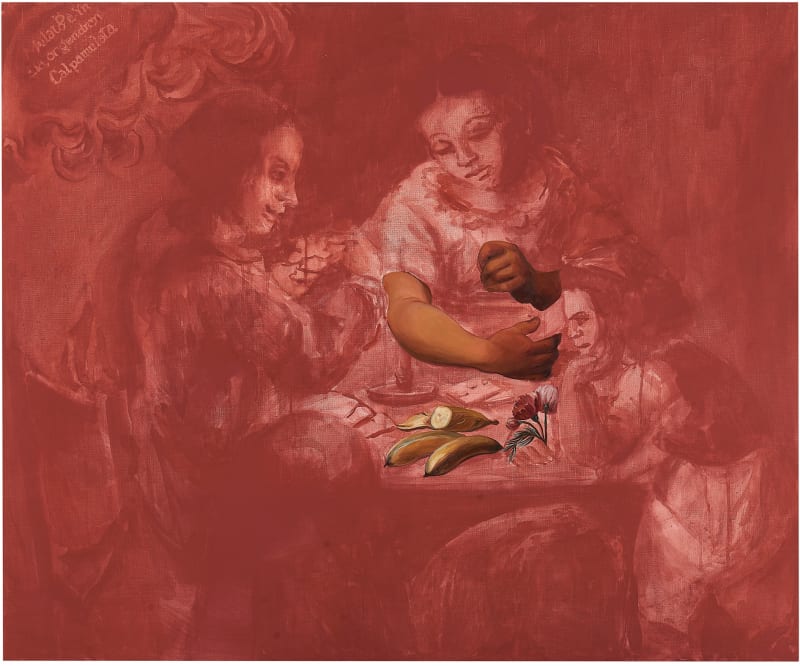The images brought together in this exhibition endeavour to make us aware of our own outlook: that is, they remind us that looking necessarily involves taking charge of what we see. The Brazilian artist and poet Wlademir Dias-Pino explained this lucidly in one of his early visual poems: “Quem olha é responsável pelo que vé” (Whoever looks is responsible for what he sees). Created in 1971, at a time of dictatorship in Brazil, the poem tried to underline the relationship between the work and the reader, stating that he who observes is not a mere recipient but the potential creator of a new reality.
Sandra Gamarra, Francisco Taka Fernández and José Carlos Martinat appear to have this idea as their compass. Their works invite us to think about the consequences of what we see or fail to see. Although each of them has a different approach to the pictorial, one common feature is the way of treating the surface as a space which accumulates layers and atmospheres in which the visible is as important as the invisible. Their works cover and re-cover in order to be able to show. Multiple times converge and cast us into the centre of the power relations of history.
Gamarra and Fernández share a question concerning the landscape: the landscape understood not as mere geographic representation, but as a symptom of ecological deterioration due to human activity and the yearning for domination and expansion. In the paintings by Fernández, the flora is tinged with mist and strata of a reddish and yellow colour. On looking at them closely, these apparently immobile and mute scenes begin to reveal disturbing presences which demand a voice and seem to want to take control of their destiny. From a similar position, Gamarra takes as her starting point the 18th and 19th-century paintings intended to represent taxonomic theories, racial typologies and the flora and fauna of the Americas from the conquerors’ perspective. Appropriating these images to use as a backcloth, the artist illuminates or highlights specific aspects of them which underline how aggression against nature is similar to the forms of coercion and control over women’s bodies —colonial and patriarchal violence still present today—.
In turn, Fernández and Martinat appear to converge on a concern for urban painting and street signs and aesthetics. Fernández introduces small symbols and gestural scripts into the landscape, as if they were fragments of a vocabulary close to graffiti, intensely reflecting a shared emotional climate. For his part, Martinat presents fragments of mural paintings stripped from various walls in Lima. These images are not random, but rather specific: remains of recent political propaganda from the party founded by Alberto Fujimori, who led a dictatorship and committed crimes against human rights in Peru in the 1990s, and who now enjoys freedom and impunity. Martinat’s works do not show the iconography of Fujimori’s party (Popular Force), but rather its deteriorated remains: a circle inside a square where there remain subtle traces of the letter K (standing for Keiko Fujimori, the dictator’s daughter). These geometric shapes are shown as ghostly shadows of a past that continues to plague the present.
The works displayed here pursue and track spectral figures. They seek to capture the ethereal and the intangible because what we do not see (or choose not to see) models how we understand the past and imagine the future. Gamarra, Fernández and Martinat create works which, despite being two-dimensional, are extremely profound, as if we were entering long tunnels without being sure how to find the way out. Their paintings do not only portray what is, but mainly what returns: presences which circle reality like ghosts.
Miguel A. López
May 16, 2024




